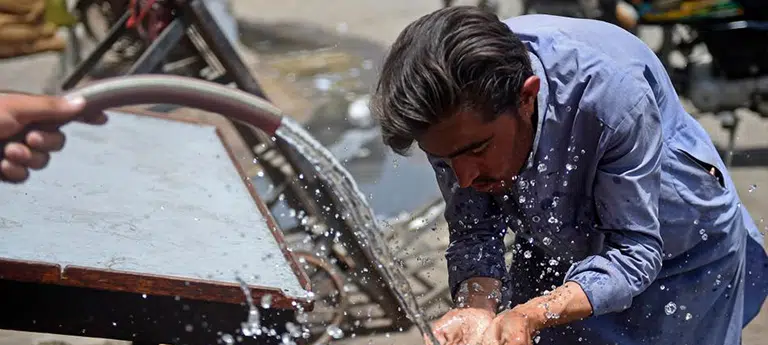The chastising heatwave that scorched India and Pakistan in March and April has been made 30 times more likely by the climate extremity, experts in quantifying the impact of global heating on extreme rainfall events said in a rapid-fire- response report.
Before the onset of the mortal-caused climate extremity, the chances of such an event being would have been roughly formerly every time, elderly author Friederike Otto, a scientist at Imperial College London’s Grantham Institute, told the AFP news agency.
Global heating to date of 1.2 degrees Celsius has docked the so-called return period for the extreme heat of analogous duration and intensity in South Asia to formerly a century, she and associates in the World Weather Attribution (WWA) institute plant.
But as the earth continues to toast up, the interval between similar killer heatwaves will shrink indeed further.
Still,” a heatwave like this bone would be anticipated as frequently as formerly every five times”, they concluded, If Earth’s average face temperature rises another four-fifths of a degree to 2C above preindustrial situations.
The March-April period was the hottest on record for that time of time in Pakistan and India.
It’ll be months before the full risk of lives lost and profitable damage can be calculated, including hospitalizations, lost stipend, missed academy days, and lowered working hours.
Further than 90 deaths have been directly attributed to the heatwave, but hot spells over the last decade suggest that number will climb far advanced, maybe into the thousands.

One impact was immediate.
The withering heat combined with 60 to 70 percent less rain than usual turned what promised to be a cushion wheat crop in India into an agrarian disaster.
As a consequence, India last week blocked millions of tonnes allocated for trade abroad, pushing up global prices formerly hit hard by conflict-torn Ukraine’s crippled wheat exports.
The unknown duration of the heatwave, which saw power outages as temperatures soared into the high 40s, suggests climate-vulnerable countries are contending against the timepiece to prepare for a climate-spoiled future, the report said.
Formerly moment,” the limits to adaption are being traduced for a large, poor population of the region,” advised Islamabad- grounded climate scientist and co-author Fahad Saeed.
“One can imagine how bad it would be indeed for an a1.5C-warmer world,” he said, pertaining to the aspirational Paris convention target for circumscribing the rise in global temperatures.
Any warming beyond1.5 C, he added, would pose an” empirical trouble” for vulnerable populations without access to air exertion or other ways to keep cool.
The new report – – which calculated the normal diurnal maximum temperatures in March and April across a large swathe of northwestern India and southern Pakistan – – may underrate the frequency of similar heatwaves, moment and in the future, the authors noted.
Indeed, an assessment by Britain’s Met Office using kindly different styles concludes that heating to date increased the liability of the India and Pakistan scorcher100-fold.






